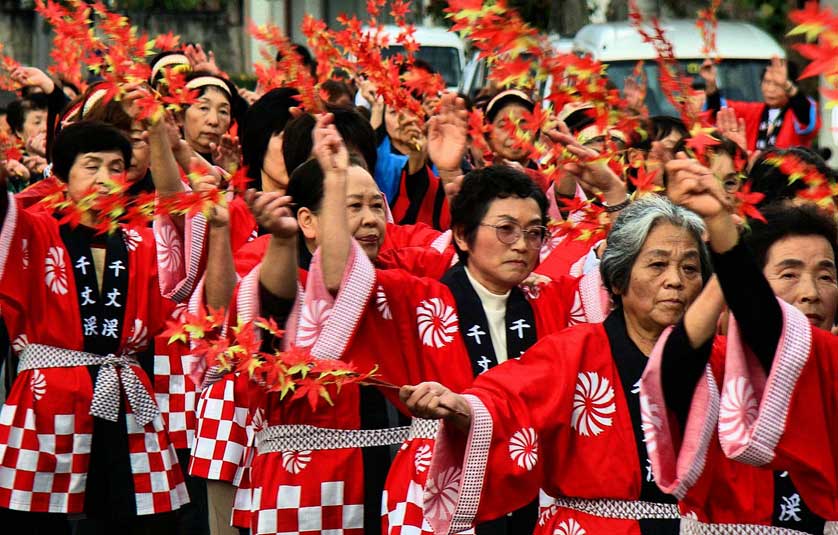Difference between revisions of "Happi"
From AmtWiki
Weird Bird (talk | contribs) m |
Weird Bird (talk | contribs) m |
||
| (One intermediate revision by the same user not shown) | |||
| Line 1: | Line 1: | ||
{{garb-stub}} | {{garb-stub}} | ||
| + | {{cleanup | ||
| + | |reason=Information might be inaccurate | ||
| + | |date=March 2024 | ||
| + | }} | ||
The happi (or hapi/happi coat) is a type of Japanese coat similar to the [[haori]] which first appeared in the Edo period. | The happi (or hapi/happi coat) is a type of Japanese coat similar to the [[haori]] which first appeared in the Edo period. | ||
| + | |||
[[File:Happis-worn-at-festival.jpg|thumb|A group of Japanese women at a festival wearing happi coats.]] | [[File:Happis-worn-at-festival.jpg|thumb|A group of Japanese women at a festival wearing happi coats.]] | ||
Latest revision as of 22:21, 12 March 2024
| This article may require cleanup. The specific problem is: Information might be inaccurate. Relevant discussion may be found on the talk page. Please help improve this article if you can. (March 2024) |
The happi (or hapi/happi coat) is a type of Japanese coat similar to the haori which first appeared in the Edo period.
Difference between Haori and Happi
During the Edo period, while the haori was exclusively worn by the chōnin (Japanese upper-class), the happi was regarded as a worker's or artisan's jacket, and was worn as a uniform by firefighters and house servants, with a mon (emblem/crest) on the back to indicate the family or organization they belonged to.
In modern Japan, the happi is usually only worn at festivals.
Links
- Haori on AmtWiki
- Happi pattern and tutorial
